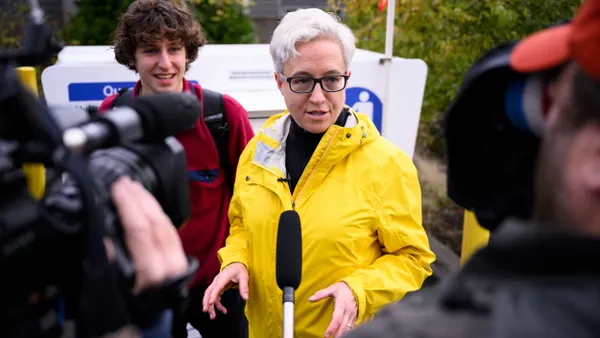Dive Brief:
-
Based on developing technology already in the pipeline, a new report by Wood Mackenzie projects that solar costs will fall another 15-25% over the next decade, potentially making solar the lowest-cost power resource in all U.S. states by 2030.
-
Rapid adoption of solar energy allowed the industry to scale and cut costs much faster than analysts in the early 2010s expected would be possible, according to Ravi Manghani, head of solar research for Wood MacKenzie.
-
Demand for solar continues to exceed installation capacity, and could continue to do so for some time, according to Manghani. But without affordable storage options, he said, solar installations could end up essentially giving power away.
Dive Insight:
How cheap could solar power get? So cheap, Wood MacKenzie's Manghani said, that someday power generators may let solar energy "go to waste" by installing more solar capacity than needed and simply turning off the excess generation when it's not.
"It's not a bad thing, because at the end of the day, if the cost is still below the other resources, you might still go with solar," Manghani said.
In the early 2010s, Manghani said, analysts who watch the solar industry anticipated slow but steady cost reductions as the industry grew. What they didn't see coming, he said, was the exponential rate at which the industry would reduce costs as it scaled rapidly.
"That's the most fascinating part," he said. "The industry, or even industry observers such as [Wood Mackenzie] underestimated the potential of scaling."
These cost declines might make one think that the age of falling solar prices is behind us, Manghani said, but he doesn't believe that is the case.
"The cost decline trend is not slowing down any time soon," he said. "Yes, there are some externalities that may change, on a short-term basis, but the level of innovation we've seen in the industry makes us feel good about the cost reduction possibilities that exist."
But the industry must also manage a balancing act, Manghani said. Until the industry has an affordable, viable solution to storing and shifting the availability of variable solar energy, there is a chance that solar could essentially grow itself out of a job. In this scenario, Manghani said, demand for solar could plummet and drag prices along with it.
At present, Manghani said, this scenario seems unlikely, with storage on track to fill the coming need. But in the meantime, he said, the industry will experience another growing pain: there is currently greater demand for solar than there is capacity to deploy it, and bottlenecks have begun to build up around permitting and interconnection. Consequently, although the actual equipment and technology continues to grow more affordable, Manghani said overall PPA prices have actually begun to rise.
PPA situation notwithstanding, Manghani said solar seems likely to enjoy "a constantly growing market" through the new end of the ITC stepdown in 2025. After that, he said, there could be a dip in demand the following year, assuming no further extensions are put into place.
"That definitely doesn't mean PPA [prices] will go up until 2025," he said, "but the tightness in supply will be a constant issue up to that point."













